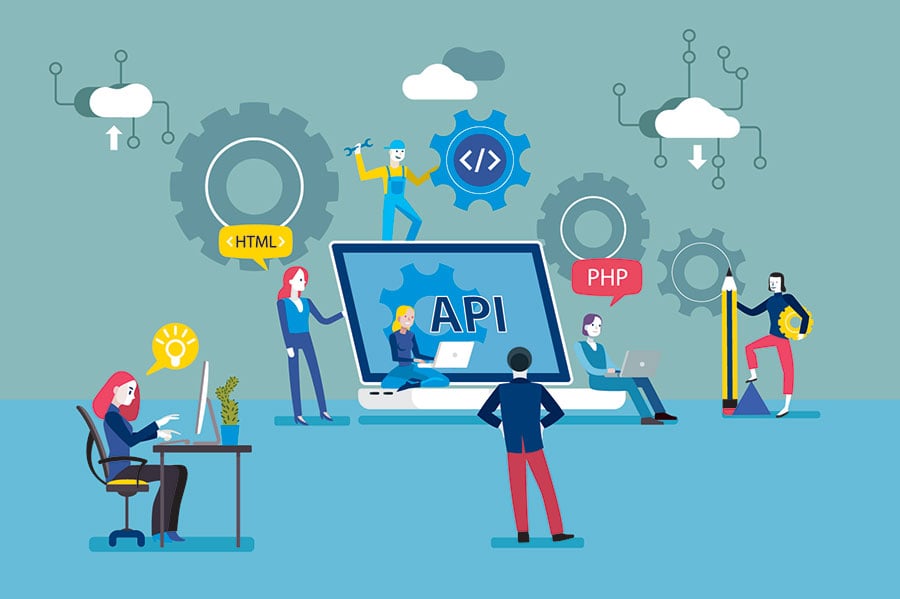Nothing makes another monotonous meeting, webinar or conference than the overuse of business Jargon. We’ve all been there, a Keynote Speaker flicks through a presentation that only they are following, and there it is – “Now, I know we hear it all the time but we should talk about *Insert generic buzzword*”.
A split second of awkward sighs and eye-rolls before the speaker laughs, followed by the laughter of everyone at the conference, so you laugh too because who doesn’t know what the funnel, silos or synergy is, eh?
But actually, maybe you don’t know but the time has passed to ask without losing self-respect in front of your peers.
But fear not, here is a breakdown of those annoying terms you’ll hear in the office in a way you can actually understand.
Silo
In short, Silo is when a group is isolated from others. This can be a problem in business when you have a few departments working on the same project but only working within the confinements of their own groups.
They are less likely to share resources or ideas with other groups or welcome suggestions as to how they might improve. This can cause close mindedness and departments don’t really collaborate to their full potential.
In-Office Example: “The product team would have benefitted from input from IT but they are siloed and didn’t brainstorm about the project together. We should work on ending the silo-culture.”
Top line and bottom line
A lot of lines going on in your office? These are the most important lines of income to your business. It’s not exactly a buzzword, just business talk you may not understand. Still not following? Let us help. Here are the basics:
Top Line – a company’s Revenues or Gross sales
Bottom Line – Net Earnings or Net Profits.
Here are the DOUBLE basics:
Top Line – This is a company’s growth. If a company is doing well because they are selling more, their top line is improving.
Bottom line – This is the overall performance to an extent. The bottom line is the income of the company as a whole AFTER you remove all the deductions. This is everything from interest rate, admin costs, and salaries. Imagine the "Net" catches whatever is left.
If your company didn’t increase their topline, the bottom line still could improve because you reduced your costs. And vice versa, you may have improved your top line but spent more, and decreased your bottom line.
In-Office Example: “This year we really want to improve our Top Line whilst maintaining or improving our Bottom line.”
Synergy
This is basically the opposite of silo-culture. Initially, Synergy in business referred to the merger or acquisition between two companies. Now it’s common for it to be used for two companies but also when two people or two teams work together (or "Synergise"). The combined value and performance of both improve the performance or outcome of what they could have achieved alone.
On a bigger scale, it’s when two compatible businesses merge together to reach a goal. A manufacturing company and a sales company for example.
This is why you hear this word a lot in the office, everyone is after more collaboration – they just have this really annoying word for it.
In-Office Example: “John Lewis and Waitrose used marketing synergies for their Christmas campaigns after they merged together. What can we do in our work place to encourage more synergy?”
API

API stands for Application Programming Interface. Oh no, it sounds techy. Don’t worry though it’s not as complicated as most people make it sound and it's super helpful for your company.
In basic terms, an API is a bridge that is made to connect data with another application, operating system or service. It’s made so you can plug data straight into a different system.
For instance, you may want to connect Salesforce into your CRM so you can get a fully-rounded view of your customers in one place, rather than flicking between several different applications.
These days, companies have APIs ready-made so that people can integrate them seamlessly within their own procedures.
In-Office Example: “It would be great to have a company’s credit information in our Sales system, we could use Creditsafe’s API to get this done”.
That’s not just an example if you’re wondering, it is actually easy to get a Creditsafe API. If you’re interested you can learn more here.
Funnel
This is another one you’ll hear a lot and/or several variations of Sales funnel, customer funnel, purchasing funnel, blah blah blah. Really, this is just the way a customer experiences your company before making a purchase from you.
You usually hear about a company, then look into it a bit more, then decide to buy and then you may even buy again as a loyal customer. There are a billion versions of this if you look on Google, but that’s about the gist.
In-Office Example: “a customer saw our Facebook ad but didn’t make a purchase, they are probably only at the awareness stage of the funnel”.
Omnichannel
The buzzword Ominchannel has been knocking around businesses for a while, probably started by that particularly annoying consultant type that occasionally hangs around your workplace. Really it’s just a fancier multi-channel. To put that into context, in Latin “multi” means “many” and Omni” means all.
It’s the idea that all apps, websites, phone calls, and physical stores work together to give a customer a seamless shopping experience. All your data is accessible from each of these so the customer is never inconvenienced… or at least that’s the idea…
It’s the kind of experience you get after you go on a clothing website and the app pops up on your phone when you go into one of their physical stores asking if you need help.
In-Office Example: “We could use push apps to really enhance the Omnichannel experience after a customer abandons their basket on the website”.
Compliance
This one is a bit of a minefield, particularly since GDPR and those good old Facebook scandals. Everyone is worried about compliance but really it has several meanings and it’s very important you know what ones affect your company because some will and some won't depending on your industry.
Your company may need to run AML checks on all of your customers for instance, or maybe you need to be particularly vigilant about how long you hold onto someone’s data.
The point is, the phrase that has your cybersecurity officer and lawyers kicking and screaming is one of those buzzwords you should really look into more.
In-Office Example: “to adhere to our compliance procedures as a Banking Society we must do PEP and Sanction checks on all of our customers”.
Blue Sky Thinking
As long as businesses have been running, someone was telling someone else to “think outside of the box”. Ancient Greek Merchants were probably telling each other to think outside the box when selling their fine pottery…
It means to think creatively, different than the norm. Few other phrases for this may include “be more disruptive”, “be more imaginative”, “be more unconventional”.

It’s particularly annoying because it’s easier said than done, like yes – we are trying.
“Blue Sky Thinking” is just a newer version of this but can be less practical, “In a perfect world” kind of thinking… although we can’t really imagine that this is ever particularly helpful in a less than perfect business environment.
However, at some point, someone said "Wouldn't it be great to tap my debit card rather than type in a pin code" or "hey, imagine we could order fast food straight to my door at 4am" and that wasn't yet possible. So actually, do more of that Blue Sky Thinking...
Ancient Greek Example: “We aren’t selling enough of our fine pottery, we need to think “outside of the box” to reach customers throughout the far corners of Greece. So come up with something”.
In-Office Example: "We need to break the mold here, people! Just do more Blue Sky Thinking and we could be the next Google".
Machine Learning
Another techy one. Machine learning is a type of AI (Artificial Intelligence) that help systems automatically learn and improve from experience without being specifically programmed for that improvement. Machine learning concerns computer programs that learn from the data it can access.
For example, your search engine (Google, Bing, etc.) may take your typical searches online and compare this with everyone else searching for similar things. Then it may start showing you things that it assumes, based on other’s behaviour, you will also be interested in.
Then we say our phones are listening to us. But then maybe they are, who knows… but that’s an example of what Machine Learning is when you hear it in the office.
In-Office Example: “We can use image recognition, the machine learning we have created allows the program to detect faces in images”.
Low hanging fruit
An oldie but a goody. Low hanging fruit is anything that is easy to achieve, a quick win.
If fruit is low hanging it would be easier to grab. Of course, the fruit at the top of the tree may be better quality, but it’s more time consuming to get.
In-Office Example: “Right now let’s concentrate on the low hanging fruit as we are coming towards the end of the month”.